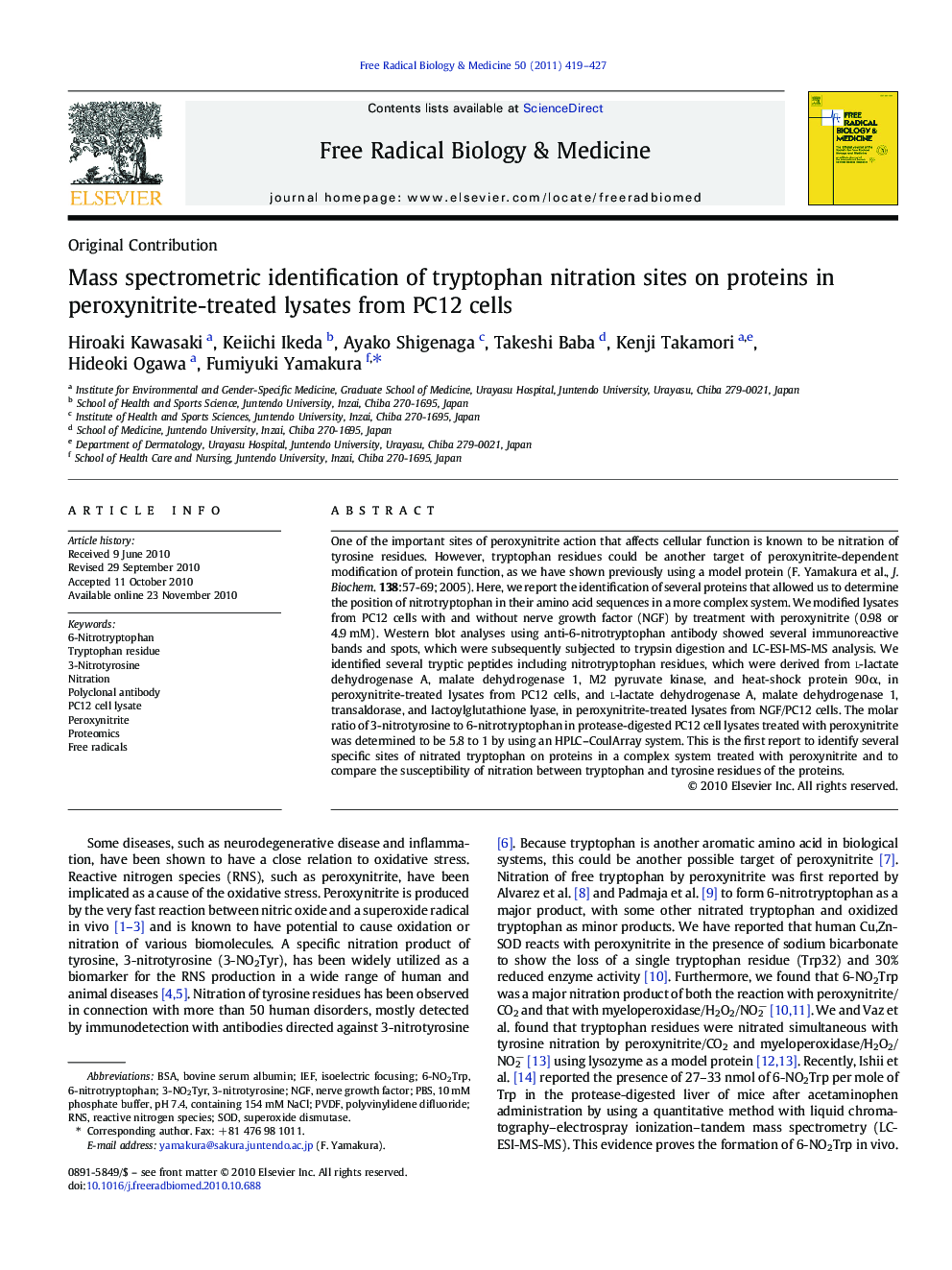| Article ID | Journal | Published Year | Pages | File Type |
|---|---|---|---|---|
| 10738695 | Free Radical Biology and Medicine | 2011 | 9 Pages |
Abstract
One of the important sites of peroxynitrite action that affects cellular function is known to be nitration of tyrosine residues. However, tryptophan residues could be another target of peroxynitrite-dependent modification of protein function, as we have shown previously using a model protein (F. Yamakura et al., J. Biochem. 138:57-69; 2005). Here, we report the identification of several proteins that allowed us to determine the position of nitrotryptophan in their amino acid sequences in a more complex system. We modified lysates from PC12 cells with and without nerve growth factor (NGF) by treatment with peroxynitrite (0.98 or 4.9 mM). Western blot analyses using anti-6-nitrotryptophan antibody showed several immunoreactive bands and spots, which were subsequently subjected to trypsin digestion and LC-ESI-MS-MS analysis. We identified several tryptic peptides including nitrotryptophan residues, which were derived from l-lactate dehydrogenase A, malate dehydrogenase 1, M2 pyruvate kinase, and heat-shock protein 90α, in peroxynitrite-treated lysates from PC12 cells, and l-lactate dehydrogenase A, malate dehydrogenase 1, transaldorase, and lactoylglutathione lyase, in peroxynitrite-treated lysates from NGF/PC12 cells. The molar ratio of 3-nitrotyrosine to 6-nitrotryptophan in protease-digested PC12 cell lysates treated with peroxynitrite was determined to be 5.8 to 1 by using an HPLC-CoulArray system. This is the first report to identify several specific sites of nitrated tryptophan on proteins in a complex system treated with peroxynitrite and to compare the susceptibility of nitration between tryptophan and tyrosine residues of the proteins.
Keywords
Related Topics
Life Sciences
Biochemistry, Genetics and Molecular Biology
Ageing
Authors
Hiroaki Kawasaki, Keiichi Ikeda, Ayako Shigenaga, Takeshi Baba, Kenji Takamori, Hideoki Ogawa, Fumiyuki Yamakura,
